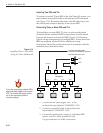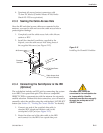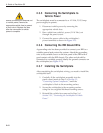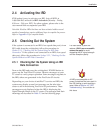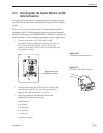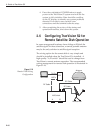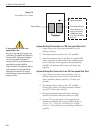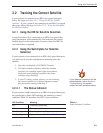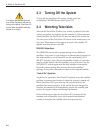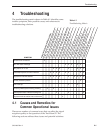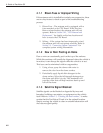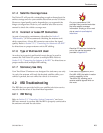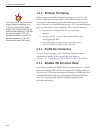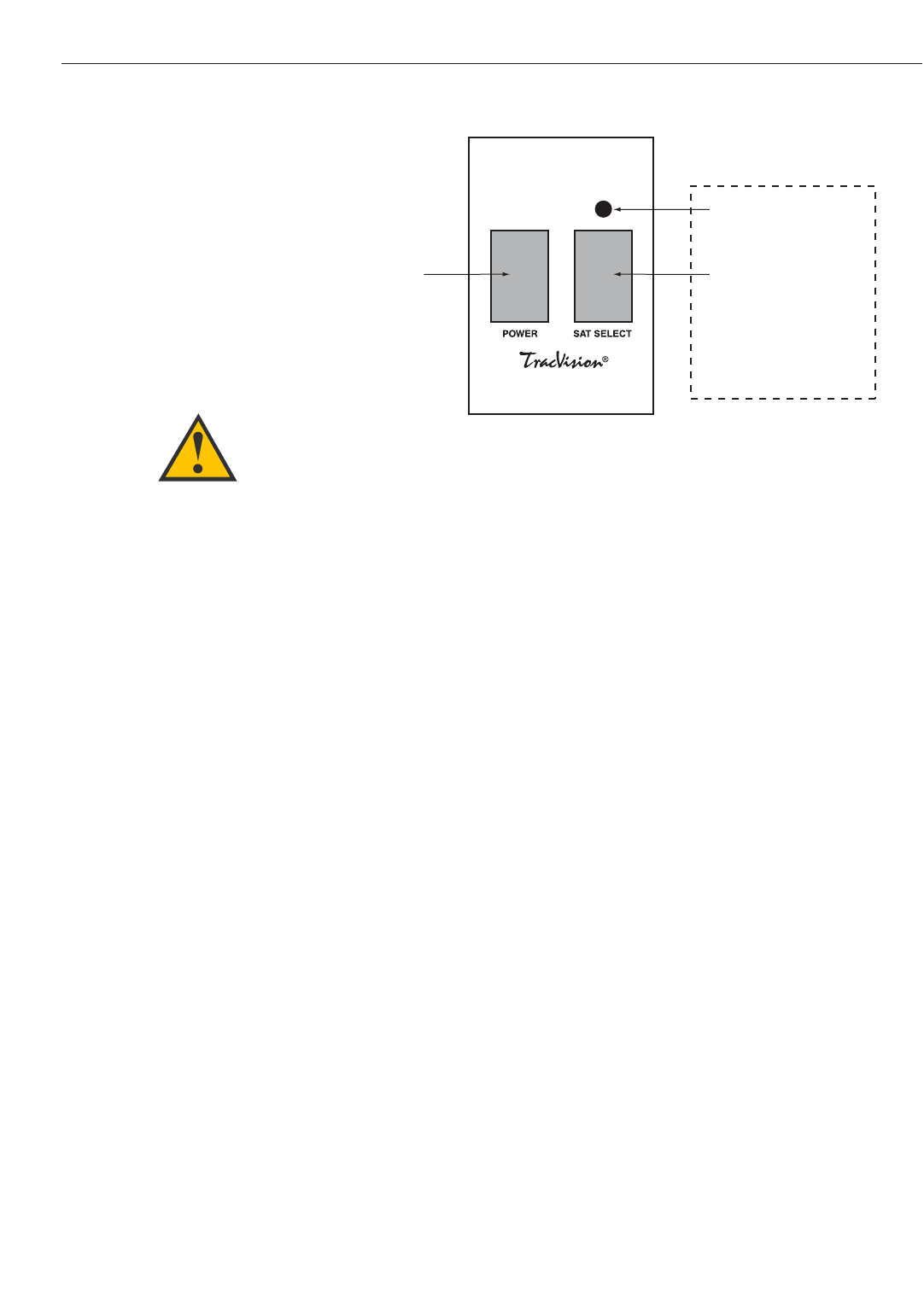
System Startup (Connected to an IRD Low-speed Data Port)
1. Upon power-up, the system performs a set of
startup routines.
2. The antenna then searches for a TV satellite.
3. Once the antenna finds a satellite, it uses the IRD
data connection to determine if the satellite signal
can be decoded. If the signal can be decoded by
the IRD, the antenna locks onto and tracks the
satellite.
System Startup (Not Connected to an IRD Low-speed Data Port)
1. Upon power-up, the system performs a set of
startup routines. If any errors are detected, the
Status indicator flashes quickly (3-4 times per
second).
2. The antenna then searches for a TV satellite.
During this search, the Status indicator flashes
slowly (1-2 times per second).
3. Once the antenna finds and starts tracking a
satellite, the Status indicator comes on solid.
4. If your TV does not show a clear picture, the
antenna is tracking the wrong satellite. Refer to
Section 3.2.2, “Using the Switchplate for Satellite
Selection” for instructions on selecting a different
satellite.
3-2
A Guide to TracVision S2
If connected to an IRD Low-
speed Data Port:
As part of the startup process, the
TracVision S2 system will default to
Channel 200, a program directory.
This is the system’s means of
verifying that it has identified and is
tracking the correct satellite.
Once Channel 200 appears, wait at
least another 30 seconds before
changing the channel to ensure
that the system has completed its
startup routine.
Power Button Sat Select Button
Status Indicator
These features only
active if the system
is
NOT
connected
to an IRD low-speed
data port
Figure 3-2
Switchplate Front Panel



